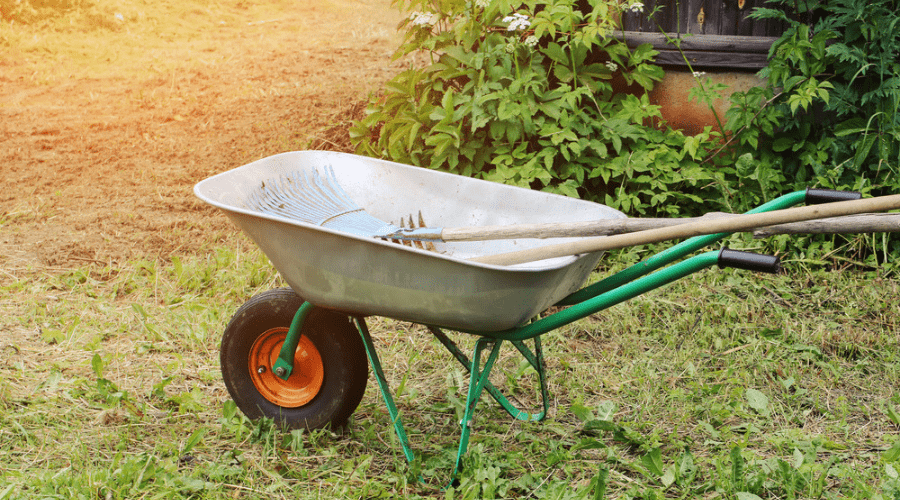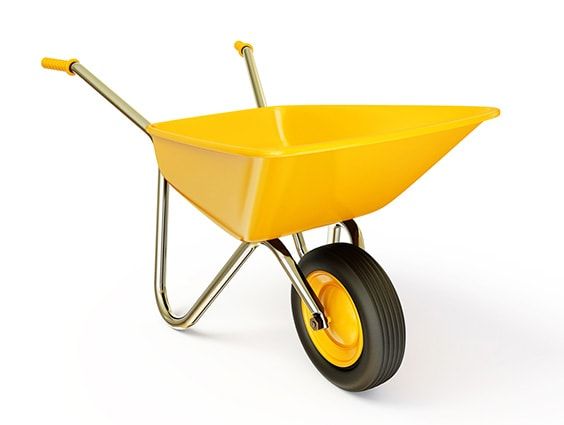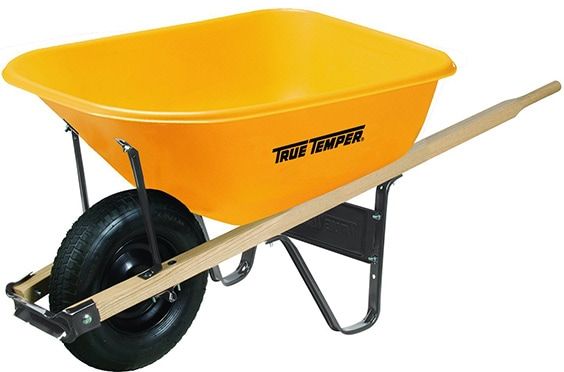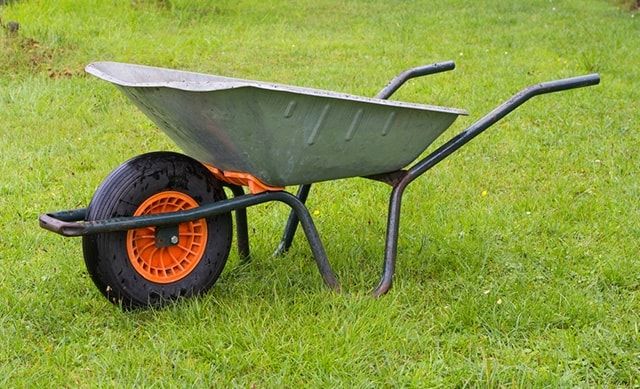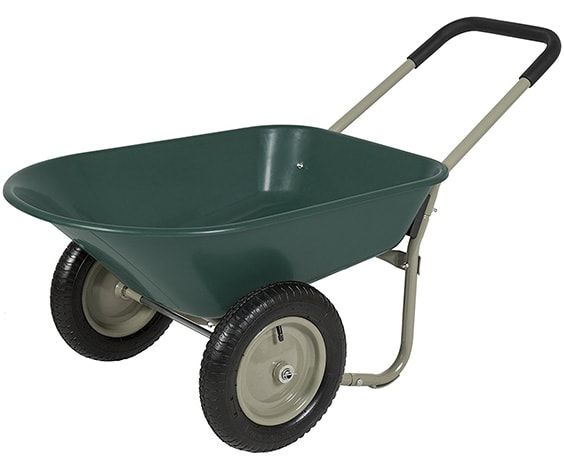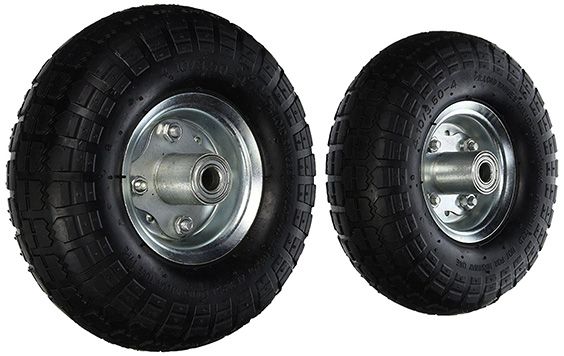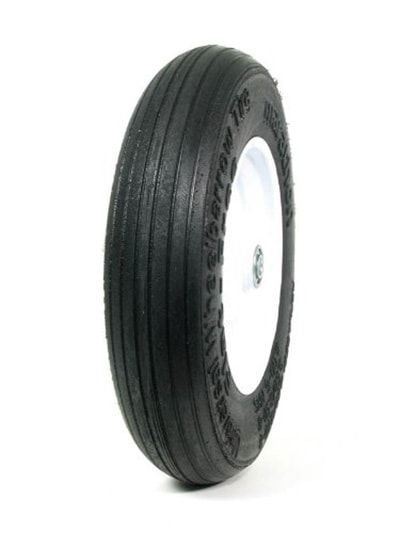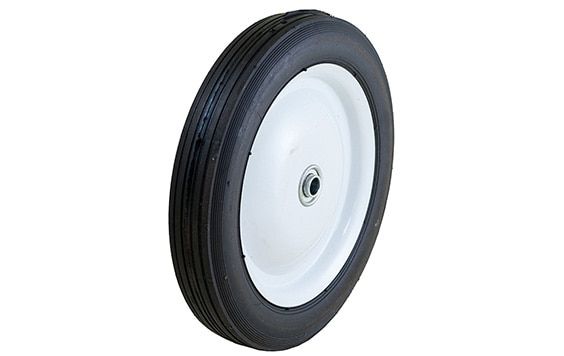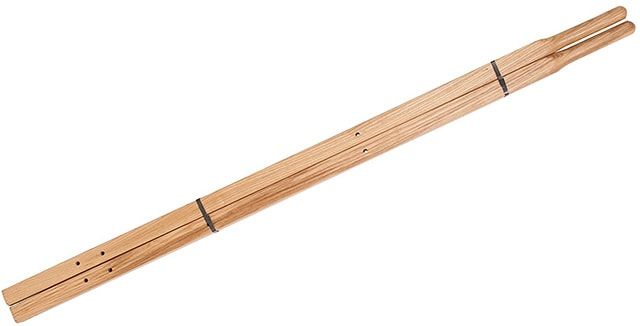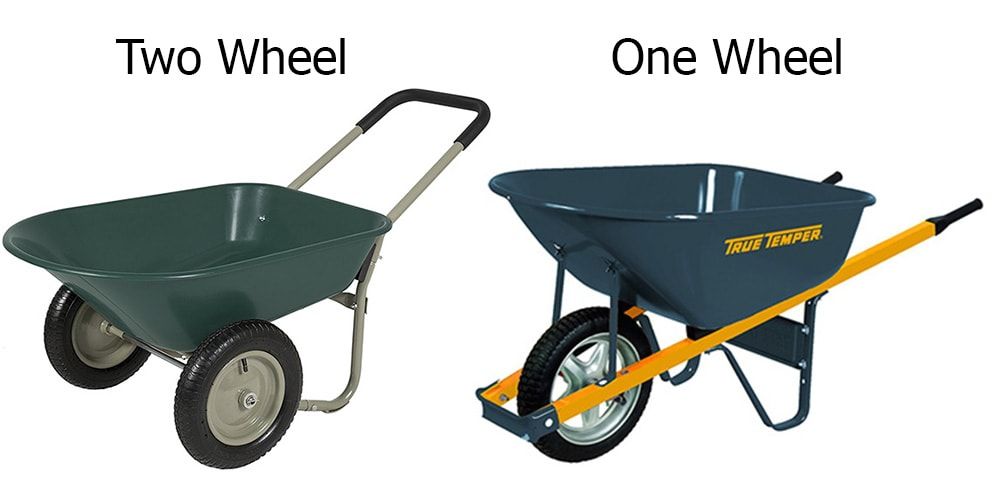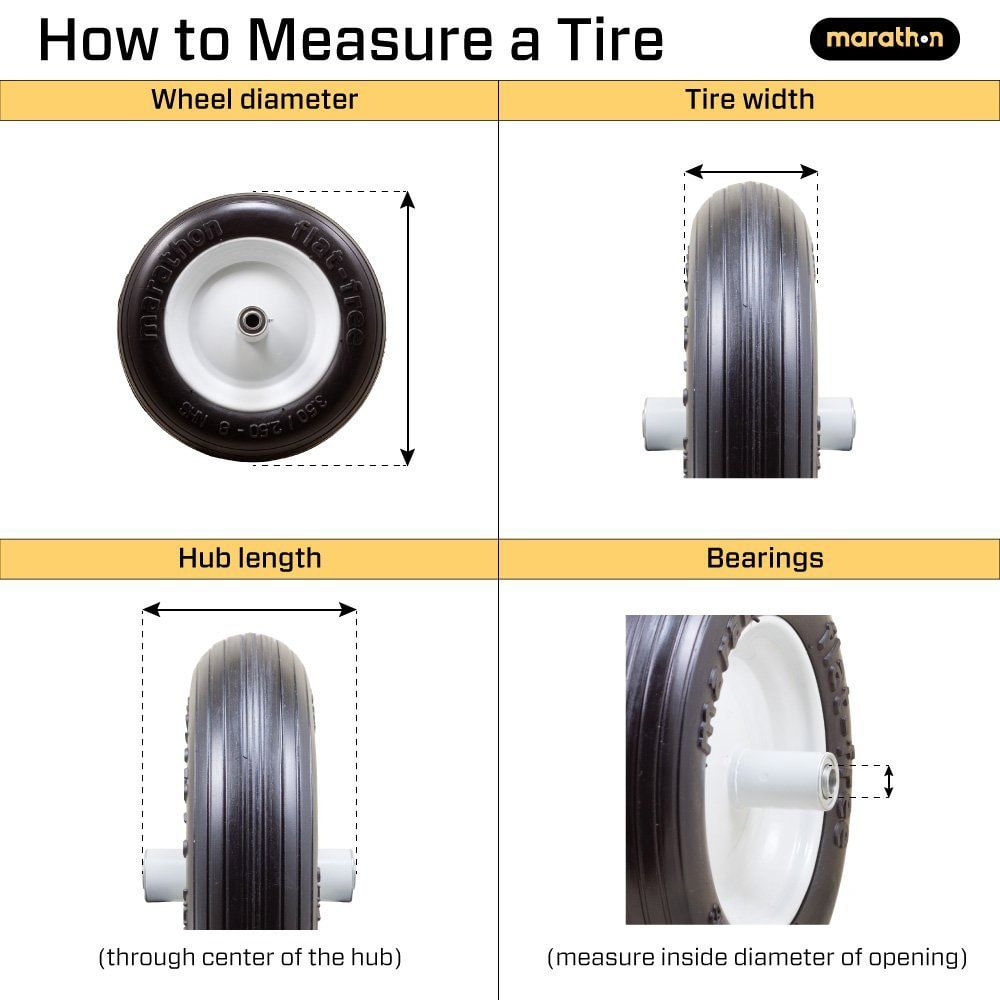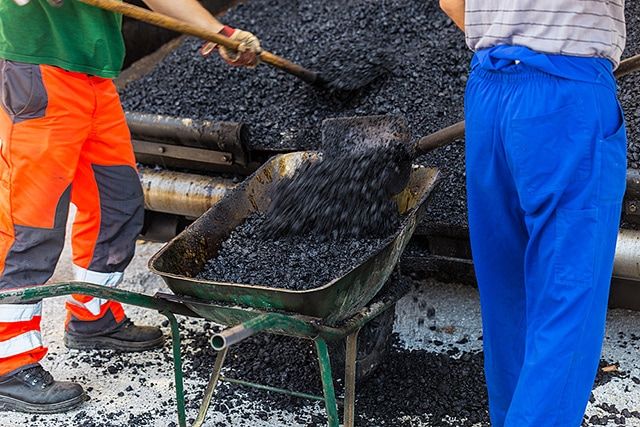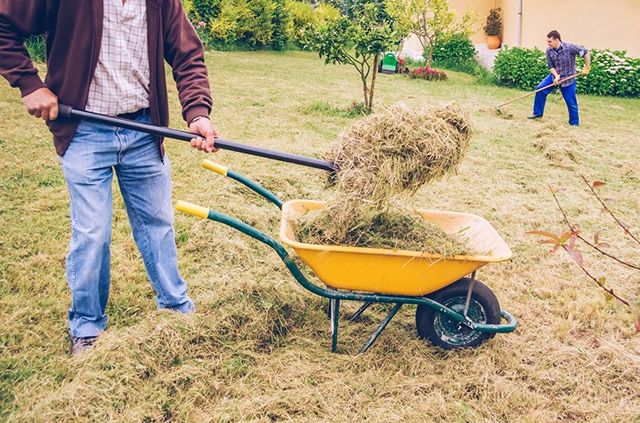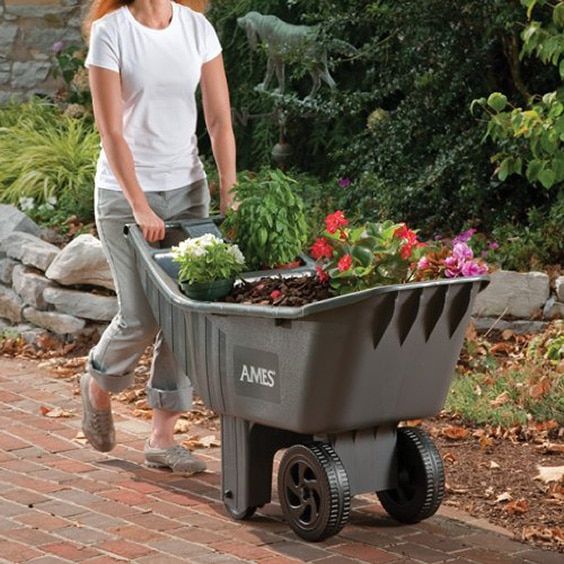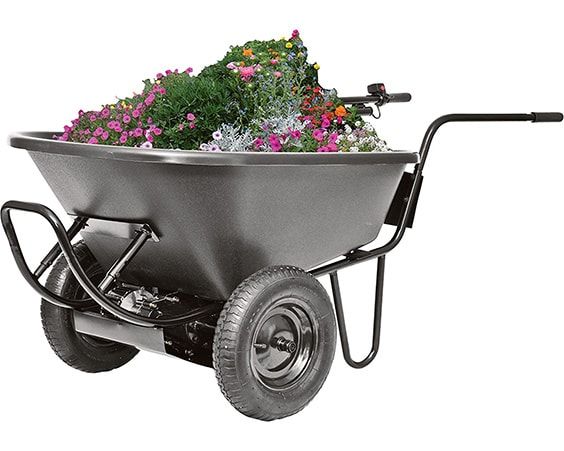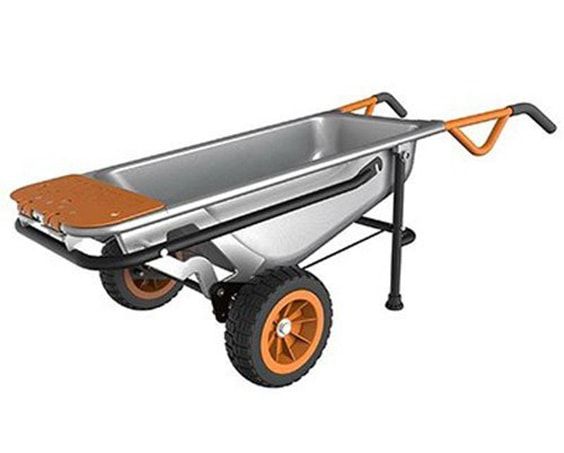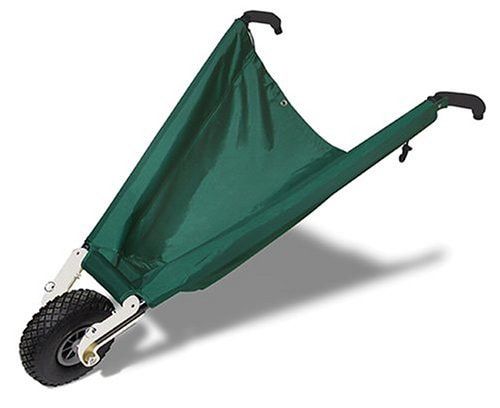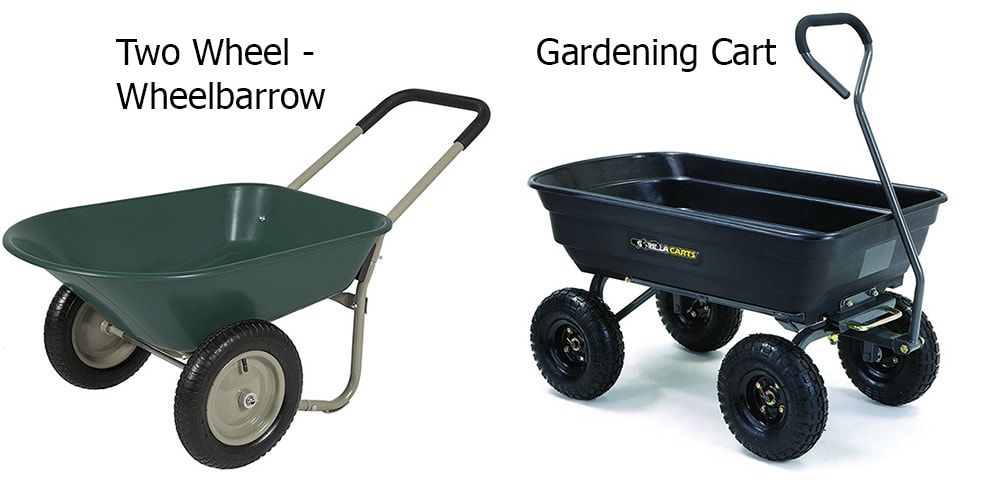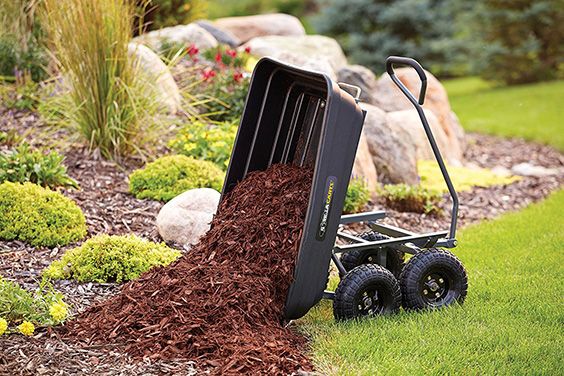One of the more versatile tools out there is the mighty wheelbarrow. It has uses which range from construction to gardening, and really just makes everyone’s life a little bit easier. When it comes to wheelbarrows, however, there are more than a couple options.
On a general basis, any wheelbarrow will work for whichever sort of job you may need. The core design has been relative unchanged for many, many years. Nice and deep, one wheel on the front, two legs on the back. There are variations, however. Choosing which works for you depends on your situation.
Let’s take a look at some of those options, as well as at wheelbarrow usage in general, and try to figure out what sort of wheelbarrow you may need for your particular job.
WHAT IS A WHEELBARROW?
This may seem like a dumb question, as pretty much everyone knows what a wheelbarrow is, but it’s worth taking a couple minutes to look at the origins of the wheelbarrow. Learning where something began can often help you appreciate what it has become.
The earliest known wheelbarrows are from the second century in China. There is a painting in a tomb showing a man pushing a wheelbarrow. It was dated to 118 CE. Other works of art show wheelbarrows from similar time periods, but several stories and such push the origins back even further, perhaps even into the first century BCE.
Exact date aside, our earliest indication shows China was one of the first places the wheelbarrow cropped up. Interestingly, their wheelbarrows tend to be a little different than the sorts we’re used to. Let’s take a closer look at that, next.
WHEELBARROWS: HOW THEY WORK
If you’ve ever come across a wheelbarrow in your day, you pretty much know the basics. They feature a basin in which to hold stuff, two long handles, legs of some type on which to rest when it isn’t being moved, and a wheel up front.
This is basically your standard style, and you’ve probably seen it with the wheel pushed toward the end. With this style, the weight is distributed evenly between the barrow and the person pushing it. Some types have the wheel more toward the center, which puts all the weight on the barrow. This center-wheel style is seen more in the Asian countries.
WHEELBARROW TYPES
Wheelbarrows come in a few different body styles, handle styles and wheel styles, and each can offer different benefits depending on what your work is.
BASIN MATERIALS
There are three common types of materials used to create the basin of a wheelbarrow, and each has some unique benefits.
1. PLASTIC
A plastic basin is much lighter than one of the metal options. This is obviously pretty important, depending on the materials you’re trying to move. Additionally, plastic doesn’t have the corrosion issues which are inherent with metal materials.
Because of this, plastic wheelbarrows are good for moving materials such as fertiliser or animal manure. They also don’t rust and some moving materials don’t stick to them. Transporting concrete in a wheelbarrow, for instance, is good because if it happens to dry on, it can be removed somewhat easily.
2. GALVANISED STEEL
Though still susceptible to rusting, galvanised steel is a good alternative to plastic because it is much sturdier. If you’re moving heavy materials like bricks or stones, galvanised steel is going to hold up a bit better as it won’t bend or bow.
Unlike plastic, steel can stand up better to years in the sunlight, whereas plastic can weaken from constantly being hit by UV rays. Certain materials can also damage plastic in ways steel wouldn’t have any issue.
3. POWDER COATED STEEL
Really, this has almost all the same qualities as galvanised steel, it just looks a bit nicer. It is, however, susceptible to being scratched if you’re moving sharp or pointed materials.
*You might also like: Plastic Vs. Steel Wheelbarrows: Which is Best?
WHEEL TYPES
Much the same as with the basins of wheelbarrows, there are three different types of wheels you’re likely to find, each of which has a different use. I’ve seen arguments for each of the varieties, but it seems much of it comes down to the job and to your level of maintenance on the wheelbarrow.
Pneumatic
An inner tube provides the support when it comes to pneumatic tires. Just as with a bicycle tire, pneumatic tires have a hard rubber outside with a tube inside which is filled with air. Also as with a bicycle tire, pneumatic tubes are more sensitive to puncturing or going flat over time.
Even so, they offer a smoother experience than some other options. Since they have more give to them, using them on uneven surfaces is going to work pretty well. You’ll just need to make sure you’re paying attention to your tires to see their quality from time to time.
Solid Rubber
Without a tube inside them, there’s no way for a solid rubber tire to get flat. You can stab it, cut it, do pretty much whatever you want to it, and it isn’t going to go flat. However, it has way more bounce than pneumatic tire.
So, you’ve got a bit of a trade off. You’ll not get any flats, but if you’re moving over rocks or any other sort of super bumpy area, you’re likely to find your wheelbarrow bouncing around and your load flying all over the place.
Semi-pneumatic
This is a middle-of-the-road type of tire in that it blends the two types. It doesn’t need to be inflated, but it does have pockets of air inside a hard rubber tire. With this, you’re going to have a bit more of a smoother ride than with a hard rubber tire.
HANDLE MATERIALS
Most commonly you’ll find either steel handles or wooden handles on a wheelbarrow. You’ll find the reasoning for these options is similar to that of the basin. Steel handles resist rust, are very strong and are unlikely to break over time.
Wooden handles, however, don’t rust at all, are a bit more comfortable than steel and have a bit of flex to them. The flex is nice as it helps better reduce additional strain on the upper body when moving multiple loads.
WHEEL SETUP
One wheel or two? There are major differences between the two which can have a major effect on your decision and usually depend on the wheelbarrow size. Having two wheels gives you more stability, so you’re less likely to dump whatever you’re carrying. What you sacrifice, however, is quite a bit of mobility. With only one wheel, you’re able to turn very quickly, basically maneuvering to any position swiftly.
WHEELBARROW VOLUME
Determining your necessary wheelbarrow capacity doesn’t need to be any sort of challenge. The most important part is to determine first how big your job is, then go from there. Most commonly, wheelbarrows come in either two or three cubic foot sizes. It’s not, however, unusual to see a wheelbarrow which can hold up to six cubic feet of material.
The formula used to determine which wheelbarrow dimensions you need is fairly simple. Using it, you can figure out how many loads you’ll need to move depending on the size of your wheelbarrow. Basically, it comes down to yards versus feet, as this stuff is measured in a certain way.
Most gardening materials, such as soil and mulch, are measured in cubic yards. So, with wheelbarrows measured in cubic feet, you just need a little math. A cubic yard is 27 cubic feet, for instance. So on a wheelbarrow with a volume of three cubic feet, you would need nine trips to move one cubic yard. Just like that, you know how many wheelbarrow loads are in a yard.
By the way, if meters are your thing, just measure your wheelbarrow capacity in cubic meters and you ought to be good to go.
WHEELBARROW TIRE SIZE
The size of your tire doesn’t have a dramatic effect on the work you’re doing, but it is important to know your wheelbarrow tire size, wheelbarrow tube size and wheelbarrow axle size in the event you need to replace it.
GETTING YOUR MEASUREMENTS
The numbers you need when it’s time to replace your tire are easy to get. What you need is a little time and the right tools. Most importantly is a tape measure. First, you’ll need to get the diameter of your tire. You’ll first want to measure the outside diameter.
Though the size may be written on the wall of your tire, taking the measurements yourself is going to help things be more accurate for you, particularly if you’re looking to switch tire types.
After measuring the diameter of the tire, run your tape measure through the middle of the hub, from end point to end point. This is important because if you don’t get the right width, your wheel is going to slide around and cause you issues with movement.
Finally, snag the bearing size. This is determined by measuring the inner diameter of the metal pieces on either side of your hub. Measuring the axle diameter will offer similar results.
BEST OPTIONS FOR DIFFERENT JOBS
Your “best” option is going to vary dramatically depending on the job you’re doing. If you working the garden versus working in construction versus working on a horse farm versus working on a beet farm. That’s a whole lot of “versus,” but it’s important to consider the options.
1. GARDENING
There’s plenty of benefits to gardening. But a home garden may be a fair amount of work, but it’s not going to require the sort of equipment you might need for something like a large farm. You’ll probably be dealing with some types of fertilizer, and you’ll need to be able to maneuver well in a small space.
With this in mind, a wheelbarrow with a plastic basin which can hold two cubic feet of material is a good option. In a small space, you’ll likely want a single wheel and, considering the kinds of surfaces on which you’ll be rolling, a hard rubber material will do well. Soft soil means very little bouncing.
2. CONSTRUCTION
Even on construction jobs, there are secondary situations which need to be considered. For general construction work, your best bet will certainly be some sort of steel wheelbarrow, and likely on the larger side. For the wheel, no matter what you’re doing, you’ll likely want a pneumatic wheel, since it gives you a smoother ride.
The specifics come into what you’re carrying. If you’re moving debris, you’re definitely going to want to stick with steel, and probably galvanized steel. Sure, you can go with the powder coat, but you run the risk of scratching it up, though I suppose pretty isn’t really a factor in construction work.
If you’re doing something like concrete work, a plastic basin will work best as it’s easier to clean. Once concrete or something similar dries onto steel, you’re pretty much stuck with it for life.
3. ANIMAL FARMS
Few things are as corrosive as animal manure. If you’re working at a dairy farm or a horse farm, plastic is definitely going to be your friend. They resist the corrosion which is inherent with bodily excretions. Additionally, a large basin is good as you’ll need to make fewer trips. Because of that, plastic is also a plus as it is a lighter material.
Unfortunately, plastic can also be damaged over time, and cracks can form which can cause residue to be trapped. This, understandably, isn’t a good thing, as it can lead to the spreading of harmful bacteria. Even so, the ease of cleaning plastic can help with that issue, to some extent.
4. GENERAL FARMING
For the most part, you’ll find general farm work is going to use something similar to gardening, just on a much larger scale. You’ll be moving manure or fertilizer across a larger area, which means you’ll want to do fewer trips and make sure you’re using your energy efficiently.
For this sort of job, I would recommend going with a plastic basin wheelbarrow, probably with two wheels to help distribute the weight, and with everything in your power to help keep you comfortable, like wooden handles and a pneumatic wheel.
For large jobs like this, however, there may be specialized wheelbarrows which can help you out, so let’s take a look at those.
SPECIAL WHEELBARROW OPTIONS
We’ve looked at the standard stuff, and all of it will get the job done well enough, but there are some things which have done over the past 20 years or so which really take the wheelbarrow game up a step from where it started almost 2,000 years ago.
1. MOTORIZED WHEELBARROWS
Moving something over a long distance, or making quite a few trips? You might want a little extra help with that, something to perhaps take the weight off a little bit. I can’t think of anything better than a motorized wheelbarrow.
These come in two and four-wheeled varieties, some which have basins which can be dumped much the same way a dump truck releases the material it is carrying. With something like this, you’ll be able to move material from point A to point B with minimal energy required.
In order to do this, however, you’re sacrificing a fair amount of steering ability. If you’re working in tight spaces, maneuvering something clunky like this can be a problem, but perhaps it’s worth the added difficulty to be able to do more at once and be far less tired afterward.
2. MULTI-PURPOSE DEVICES
If you want something which is great for your garden, but you may want to use elsewhere as well, a multi-purpose wheelbarrow is right up your alley. Some of them can serve as more than just a wheelbarrow, in fact, also able to be used as a dolly or a way to lift heavy items or even as a holder for bags when you’re gathering leaves in your yard.
A product like this can really help out with potential storage issues associated with wheelbarrows, as they’re not particularly small. With multiple usage scenarios, you’re cutting out having to have additional devices, which is a benefit if your storage areas aren’t so large.
3. FOLDABLE WHEELBARROW
Speaking of needing space, a folding wheelbarrow could be quite handy, and such a thing actually exists. The use cases for something like this are much smaller, however. You’re unlikely to be able to carry especially heavy loads, so it is pretty much relegated to home gardening jobs.
Being able to easily fold the thing and put it into the garage or closet, or even hang it on a wall, means it’s a wonderful option for those without the space to store something like a full-sized wheelbarrow, even one on the smaller end of things.
IS A WHEELBARROW THE RIGHT TOOL FOR YOU?
If you’ve got a job which requires, say, a great deal of dirt. I’m talking multiple cubic yards of dirt, maybe a wheelbarrow isn’t what you’re looking for. Perhaps, instead, what you want is a cart of some sort. But what’s the difference between the two?
In truth, a two-wheeled wheelbarrow can probably be classified as a cart, though in most cases, carts are pulled behind you as you move, whereas a wheelbarrow is pushed along the front. Semantics aside, I like to consider a cart as anything which has wheels to fully support the load as it moves.
There are some distinctive differences between a wheelbarrow vs. a cart. Depending on the size, of course, carts can hold quite a bit more than a wheelbarrow can for purely logistical reasons. Since a wheelbarrow requires lifting part of it to move the load, there is definitely a much lower upper limit on weight than you might see on a cart.
A cart, which would support the entirety of the weight across multiple wheels, can be pulled along with a fair amount of ease, though, of course, humans can only pull so much. This is where you might want to bring in the idea of a tractor or some other vehicle to pull it, something which can’t ever be done with a wheelbarrow.
A SPECIAL DESIGN
Before we head into the final stretch, I wanted to relay an interesting wheelbarrow variation which was put forth in the 1970s by a name which is now quite familiar to most anyone who has seen a vacuum commercial in recent years: James Dyson.
Dyson’s first invention was, in fact, a take on the wheelbarrow, something he called the ballbarrow. Instead of using a single thin wheel, Dyson designed one which used a large, rubber ball. This, he believed, would make it easier to move around on soft soil. It would also provide more stability for heavier loads.
While it saw release for some time in the United Kingdom, the ballbarrow didn’t quite catch on enough to see mass use worldwide, and it’s pretty much nonexistent today. Dyson wasn’t done with the ball, though, as he used it in other inventions, including a vacuum he released in the early 2000s.
Being able to easily fold the thing and put it into the garage or closet, or even hang it on a wall, means it’s a wonderful option for those without the space to store something like a full-sized wheelbarrow, even one on the smaller end of things.
WHAT ARE YOU LOOKING FOR?
If there’s one thing I hope you took away from this guide, it’s the fact that there is likely a perfect wheelbarrow or other device out there for the job you’re looking to accomplish. Material plays a big role, as does the size of your wheelbarrow.
The simple equation is a great way to see what size is going to work well for you, or you could just get one in a standard size and hope the job gets done quickly. That’s probably not as effective, however, as following the advice offered and getting exactly what you need.
CONCLUSION
As with anything, be sure to do your research before you make a major purchase. Wheelbarrows aren’t especially expensive, especially the more common varieties, but it’s still more money than you likely want to throw away.
I truly hope you enjoyed all the information provided here and I hope you found it helped you make your decision. If so, please let us know in the comments, and you have any information you would like to add, please share that, as well. And, if you really found this useful, share it with others you know who could use it.

